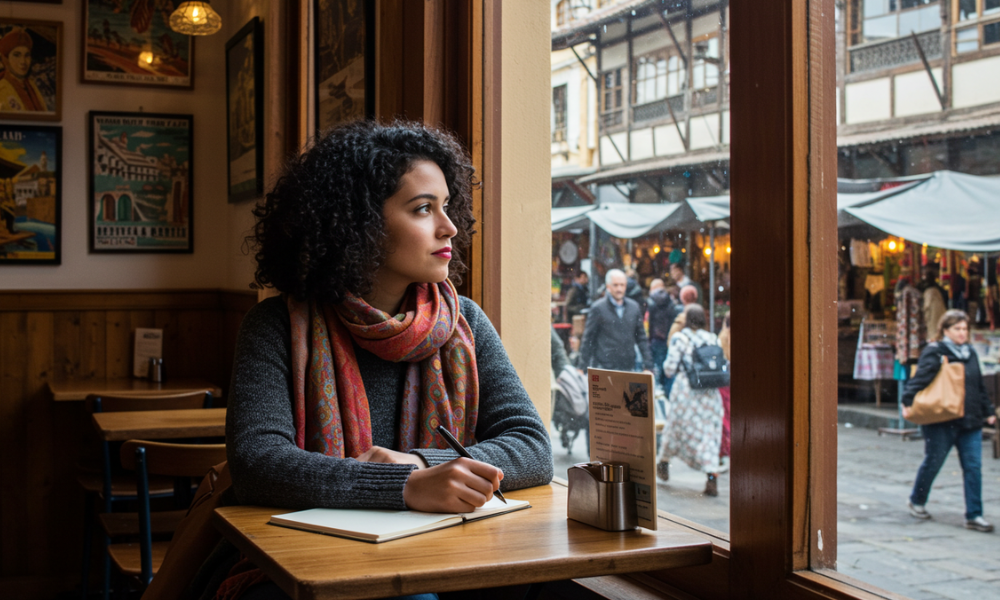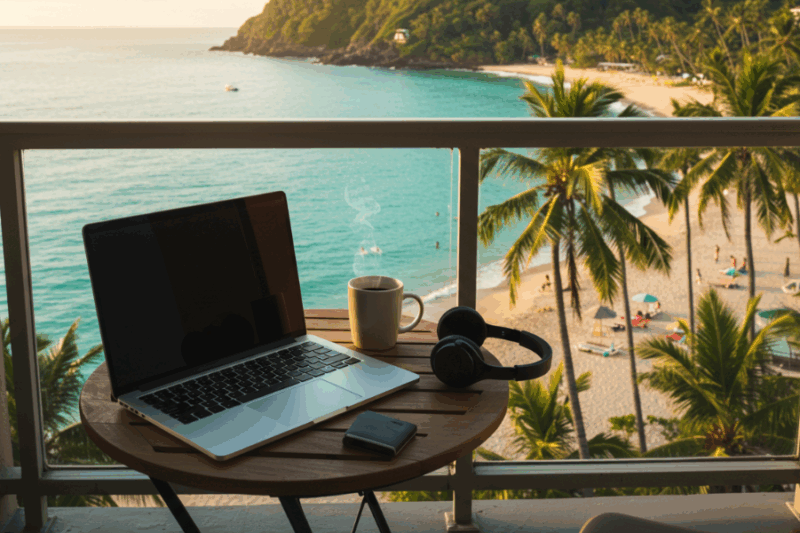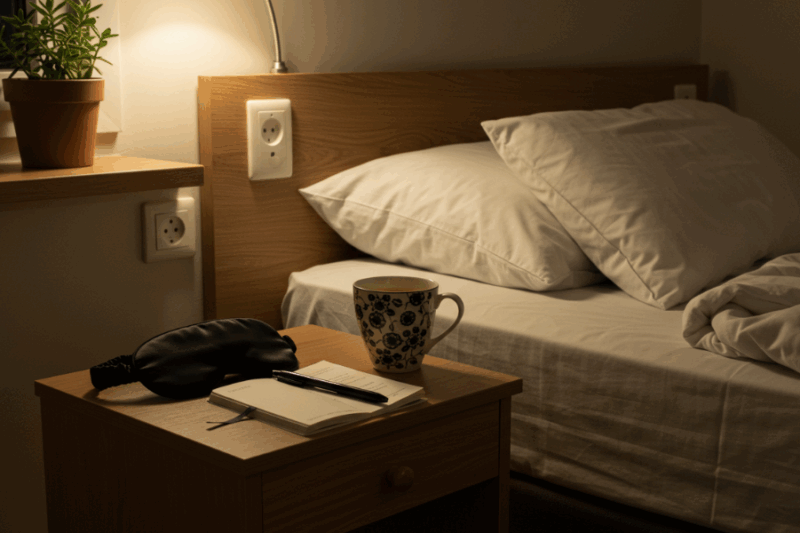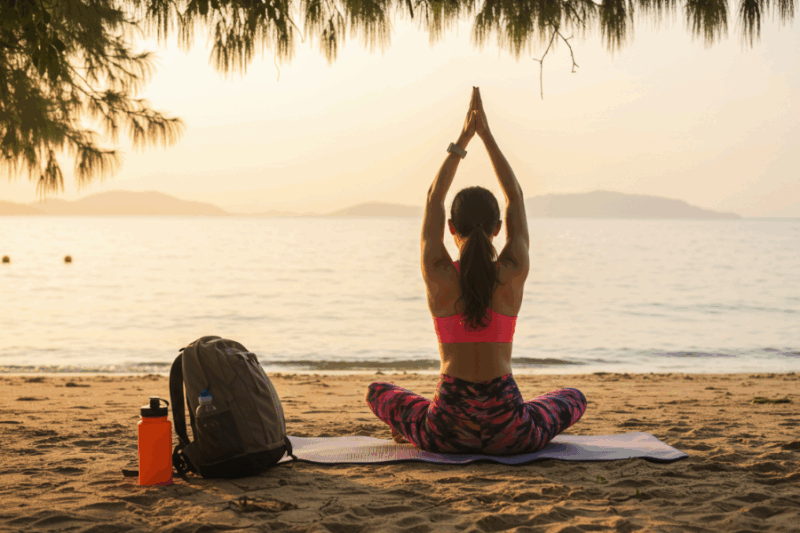Traveling abroad is an exciting way to explore new cultures, cuisines, and landscapes, but it can also bring culture shock—a sense of disorientation from unfamiliar customs, languages, or social norms. For minimalist travelers, managing culture shock is key to staying grounded, keeping your journey simple, and focusing on meaningful experiences without mental clutter. Whether you’re navigating bustling markets in Morocco or quiet temples in Japan, these practical strategies will help you cope with culture shock, adapt to new environments, and embrace the adventure—all while traveling light and intentionally.

Understanding Culture Shock
Culture shock is the emotional and psychological stress of adjusting to a foreign culture. It can manifest as confusion, frustration, homesickness, or even physical fatigue, often in stages: initial excitement, discomfort, adjustment, and acceptance. Common triggers include language barriers, unfamiliar etiquette, or different daily rhythms (e.g., siestas or late dinners). For minimalist travelers, addressing culture shock aligns with simplifying your mindset and packing only what’s essential—both physically and emotionally. Here’s how to handle it effectively.
1. Research Before You Go
Preparation is a minimalist’s best tool for reducing culture shock. Before my trip to Thailand, I spent a few hours learning basic customs—like removing shoes before entering homes or using the “wai” greeting. I used free resources like travel blogs, YouTube videos, and X posts to understand dress codes (modest clothing for temples) and social norms (avoiding public displays of affection). Knowing these basics helped me blend in and feel less overwhelmed in Chiang Mai’s markets. Research key phrases (e.g., “hello,” “thank you”) in the local language to ease communication. How to Do It: Spend 1–2 hours on sites like Lonely Planet or Culture Trip. Download a phrasebook app like Duolingo or Google Translate (offline mode). Why It Helps: Builds confidence and reduces surprises, keeping your mental load light.
2. Pack Light, Pack Smart
A minimalist wardrobe and gear setup minimizes stress, letting you focus on cultural adaptation rather than managing stuff. For a two-week trip to Vietnam, I packed a 20L backpack with a capsule wardrobe: three breathable tops, two bottoms, sandals, sneakers, and a scarf for modesty. This kept me mobile in Hanoi’s crowded streets and compliant with temple dress codes. I also carried a small notebook to jot down observations, helping me process new experiences without digital overload. Avoid overpacking gadgets or heavy guidebooks—use your phone for maps and translations. How to Do It: Follow the 1-2-3-4-5-6 rule (1 hat, 2 shoes, 3 bottoms, 4 tops, 5 socks, 6 underwear). Include a multi-use item like a sarong for modesty or shade. Why It Helps: Less physical clutter frees mental space to navigate cultural differences.
3. Embrace a Beginner’s Mindset
Culture shock often stems from expecting things to work like home. Adopting a beginner’s mindset—open, curious, and non-judgmental—helped me in Malaysia when I was initially frustrated by slow service at a Kuala Lumpur cafe. Instead of comparing it to U.S. norms, I observed locals’ relaxed pace and learned it’s a cultural emphasis on connection over speed. Approach differences as learning opportunities, whether it’s squat toilets in Thailand or haggling in Moroccan souks. How to Do It: When frustrated, pause and ask, “What can I learn here?” Smile and observe how locals handle situations. Why It Helps: Shifts focus from discomfort to discovery, aligning with minimalist simplicity.
4. Connect With Locals
Interacting with locals can ease culture shock by humanizing unfamiliar settings. In Da Nang, I joined a free walking tour led by a local guide (tipping $5) who explained Vietnamese customs, like offering food to ancestors. Chatting with vendors at markets or cafe staff also built small connections that made me feel less isolated. For minimalist travelers, these interactions are low-cost and don’t require extra gear—just an open attitude. Use platforms like Meetup or X to find local events, or simply strike up conversations at hostels. How to Do It: Learn basic greetings to start conversations. Join free or low-cost activities like language exchanges or community festivals. Why It Helps: Builds familiarity and reduces feelings of alienation.
5. Establish a Routine
Culture shock can feel overwhelming when everything is new. Creating a simple routine provides stability. During my month in Bali, I started each day with a walk and coffee at a local warung, grounding me amidst unfamiliar Hindu rituals and traffic chaos. Even small habits—like journaling, stretching, or eating a familiar snack (I carried almonds)—offer comfort. For minimalist travelers, a routine keeps your day uncluttered and manageable, requiring no extra packing. How to Do It: Pick 1–2 daily rituals (e.g., morning tea, evening walk). Carry a lightweight snack or reusable water bottle for consistency. Why It Helps: Anchors you in a foreign environment, reducing mental fatigue.
6. Limit Digital Overload
Constantly checking social media or news from home can amplify homesickness and distract from immersion. In Cambodia, I limited my phone use to offline maps and translations, spending more time observing Angkor Wat’s details instead of scrolling X. This minimalist approach—focusing on the present—helped me adjust to local rhythms. Set boundaries, like checking messages only once a day, and use airplane mode to stay offline during outings. How to Do It: Download offline apps (Maps.me, Google Translate) to reduce data use. Set a daily screen-time limit. Why It Helps: Keeps you engaged with your surroundings, easing cultural adjustment.
7. Be Kind to Yourself
Culture shock can bring unexpected emotions, from irritability to loneliness. Acknowledge these feelings without judgment. In Japan, I felt overwhelmed by Tokyo’s crowds and language barriers, so I took a quiet afternoon in Ueno Park to recharge. For minimalist travelers, self-care doesn’t require much—rest, hydrate, or enjoy a familiar activity like reading. If homesickness hits, call a friend or listen to a favorite song, but balance it with local exploration. How to Do It: Schedule downtime (e.g., a cafe break). Carry a small comfort item (e.g., a photo or notebook). Seek help if needed via travel forums or embassy resources. Why It Helps: Normalizes discomfort and builds resilience.
Tips for Minimalist Travelers
- Travel Light: A small backpack (20–30L) reduces physical stress, letting you focus on cultural adaptation.
- Budget Wisely: Free activities (parks, markets) and cheap eats ($1–3 at street stalls) keep costs low while immersing you in culture.
- Stay Flexible: Be open to changing plans if a custom feels overwhelming—e.g., skip a busy market for a quiet temple.
- Document Simply: Use a phone or small journal for notes and photos, avoiding bulky cameras or scrapbooks.
- Learn Gradually: Master 5–10 local phrases before arriving; add more as you go to avoid language overload.
- Seek Community: Hostels or co-living spaces foster connections with other travelers, easing isolation.
Why Managing Culture Shock Matters
Handling culture shock is essential for minimalist travel, as it keeps your journey intentional and stress-free. By preparing, staying open, and simplifying your approach, you can turn disorientation into discovery. These strategies helped me navigate Southeast Asia with ease, from Thailand’s bustling streets to Cambodia’s serene temples, all while carrying just a backpack and an open mind. They align with minimalism by reducing mental and physical baggage, letting you focus on the richness of new cultures.
Culture shock is a natural part of travel, but it doesn’t have to derail your adventure. Pack light, embrace the unfamiliar, and let these tips guide you to a deeper connection with the world. How will you prepare for your next trip abroad?



